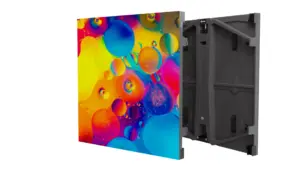Display technology company, Bendac, has unveiled its new Pro Range of products, featuring the ProCine, an LED tile specifically designed for virtual production (VP) within the film and TV, corporate, and simulation industries.

The ProCine 1.9 LED tile, the centerpiece of the range, boasts unique technical specifications, which Bendac claims surpass other VP-oriented LED wall tiles in the market.
A distinguishing feature of the ProCine 1.9 is its high refresh rate of 15,360Hz, which is considerably higher than the typical rates offered by most VP LED tiles. This significantly reduces the risk of flicker when filming, thereby improving the shooting experience.
The ProCine 1.9 LED tile also offers an impressively large color gamut, covering 99.2% of the DCI-P3 color space. This translates to a more vibrant and accurate color representation on screen, allowing for a more immersive and realistic VP experience.
Beyond display quality, the ProCine 1.9 LED tile uses a common cathode design with an advanced driver chip that reduces the number of integrated circuits on each tile. This design innovation results in lower power consumption, with Bendac claiming a 20 to 30% reduction in power usage.
| Consideration for LED Tile Selection | Bendac ProCine 1.9 Solution |
|---|---|
| Refresh Rate | Offers a high refresh rate of 15,360Hz, significantly reducing flicker risk during filming |
| Color Gamut Coverage | Covers 99.2% of the DCI-P3 color space, allowing for vibrant and accurate color representation |
| Pixel Depth/Pitch | Features a pixel pitch of 1.9mm (sub-2mm), recognized as optimal for virtual production |
| Light Output | Has a light output of 1500 nits, exceeding HDR requirements for bright and detailed images |
| Real-world Performance Validation | Bendac claims to have thoroughly tested the ProCine 1.9’s real-world performance, ensuring it meets the stated specifications |
| Energy Efficiency | Uses a common cathode design with advanced driver chip, reducing the number of integrated circuits and achieving 20-30% power savings |

